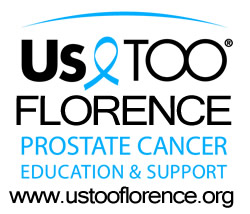|
||||||||
| Home | News You Can Use |
About Us TOO Florence |
Personal Journeys | Slideshows | Contact Us | |||
Events News you can use Treatments |
We pick this up now on March 4, 2013 with a Guest Viewpoint published in the Eugene, OR newspaper, The Register-Guard, authored by Bob Horney, Us TOO Florence Chapter Leader and Evening Group Facilitator and Jim Buch, Facilitator of the Us TOO Florence Noon Group: Don't retreat in fight against prostate cancer Since the May 2012 publication of the U.S. Preventive Services Task Force's recommendation against screening asymptomatic men for prostate cancer and the American Academy of Family Physicians' endorsement of it, referrals to urologists are down 25 percent to 35 percent. Why are these institutions throwing away the gains made in the last 25 years with prostate-specific antigen, or PSA, screening? In the PSA era, prostate cancer that has reached an advanced stage by the time it is diagnosed in the United States has been reduced from 21 percent to a mere 4 percent. Death rates have fallen by more than 40 percent, more than for any other cancer in men or women. Statistical models suggest that 45 percent to 70 percent of this decrease is due to screening. One study published in the journal Cancer shows that PSA testing in the United States prevents about 17,000 men each year from having metastatic prostate cancer at diagnosis. According to lead researcher Dr. Edward Messing, chairman of urology at the University of Rochester Medical Center, data show that if age-specific pre-PSA era incidence rates were to occur in the present day, the number of men whose cancer had already spread at diagnosis would be three times greater - 25,000 instead of 8,000. Whatever that number may be, returning to the days of diagnosing prostate cancer only after symptoms appear will absolutely increase pain, suffering and death - and the unnecessary loss of husbands, fathers and other loved ones - at an astronomical cost. The USPSTF determined that urologists were often finding harmless prostate cancers, aggressively treating them anyway and leaving many men harmed by lifelong incontinence and impotence. That's what it found looking at a study that began 20 years ago. That is not what we see happening today! First of all, urologists have made significant progress in differentiating between cancers they can watch and cancers that need treatment. Secondly, the side effects (incontinence and impotence) are very treatable and seldom as serious as the USPSTF claimed. Drs. Pamela Hartzband and Jerome Groopman wrote in "There Is More to Life Than Death," that there was no difference in quality-of-life assessments between men who underwent a prostatectomy and those who chose active surveillance. Yes, men adapt remarkably well to these changes. We who have been diagnosed, treated and moved on with our lives understand exactly. Possibly as soon as 2014, urologists will have additional biomarkers available to more precisely determine the aggressiveness of a patient's cancer, minimizing or even eliminating the USPSTF's concerns regarding over-diagnosis and over-treatment. These biomarkers will enhance the PSA test, reduce treatment of indolent cancers and actually support increased screening of asymptomatic men. Why didn't the USPSTF throw its weight behind more research dollars to get these newer biomarkers into urologists' hands as soon as possible? Why throw out all those years of progress? Contrast the USPSTF/AAFP recommendations with up-to-date information available every month at the Us TOO Florence seminars. We don't have monthly meetings; we have monthly seminars - an evening with urologist Dr. Bryan Mehlhaff and lunch with Dr. Doug Hoff. These seminars explore prostate cancer from screening to life after treatment, and answer questions and concerns of those in attendance. After spending time each month with Mehlhaff and Hoff, we understand how conservatively and deliberately they approach our prostate cancer care. In addition, we know what is going on here and now with treatment and side effects, because it is happening to us - more than 150 of us in the last decade. We don't depend on studies to guide our way; we know, understand and appreciate the present-day level of total prostate cancer care. Thanks to Dr. Mehlhaff's tenacity, our men with metastatic prostate cancer receive the latest Food and Drug Administration-approved treatments as they become available. Us TOO Florence strongly supports the American Urological Association's guidelines of men getting a baseline PSA at age 40, along with a comprehensive risk assessment. That is the common-sense approach that will catch and treat early aggressive cancers and help urologists schedule future exams for the rest, based on their individual risks. Early detection is the key to curing prostate cancer. Anyone uncertain about being screened and wishing to speak with a urologist, prostate cancer survivors or both should plan to attend an Us TOO Florence seminar. Information about them is just a mouse click away on this website. |
| www.ustooflorence.org Copyright © 2010 - 2025 | |

